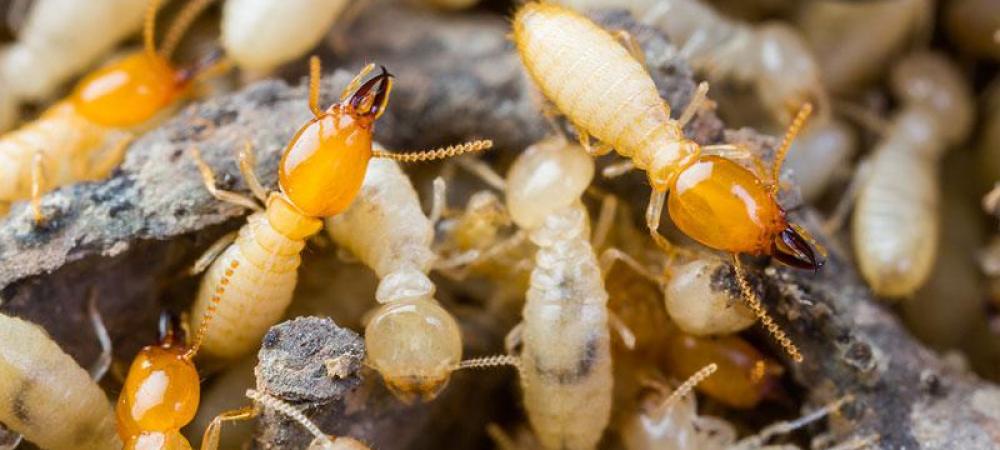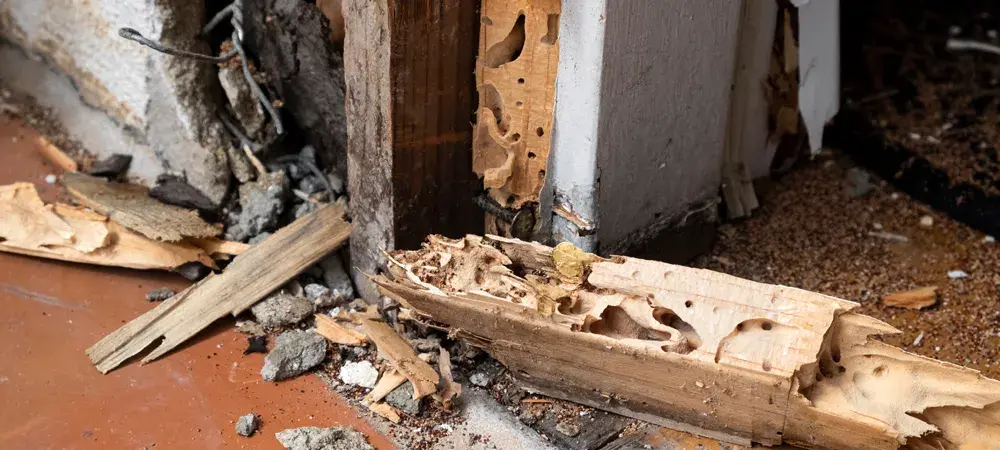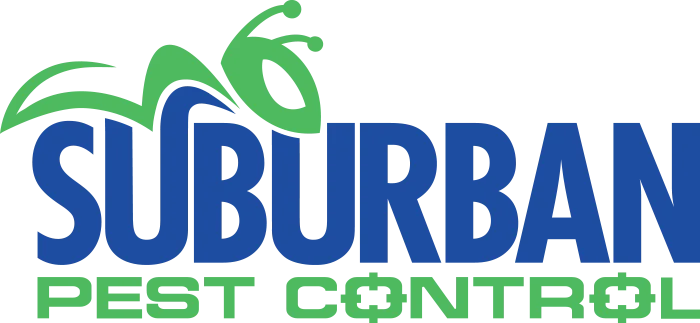How To Identify, Prevent, And Get Rid of Subterranean Termites

What Are Subterranean Termites?
Subterranean termites are a type of termite that live underground and are responsible for causing extensive damage to wooden structures. These termites are found in most parts of the world and are considered to be a serious threat to the structural integrity of homes and buildings. Subterranean termites are rarely seen above ground and spend most of their time in the soil or in the tunnels they create, which makes them harder to notice.
How To Identify Subterranean Termites
Subterranean termites are small, pale-colored insects that are often mistaken for ants. They have three body segments, six legs, and straight antennae that are bead-like in appearance. The three body segments are the head, thorax, and abdomen, and they are all roughly the same size.
Subterranean termites are typically around 1/8 to 1 inch long, depending on their caste within the colony.
- The worker termites, which are responsible for feeding the colony and building the tunnels, are usually the smallest, while the reproductive termites (swarmers) are the largest.
- Swarmers have two pairs of wings that are equal in size and shape and extend beyond their body. They are dark brown or black in color and can be distinguished from ant swarmers by their straight, rather than elbowed, antennae.
- Soldier termites, which are responsible for defending the colony, have elongated heads and powerful jaws for crushing and cutting threats. They are also slightly larger than worker termites and have darker heads.
Termites are social insects that live in colonies that can number in the thousands or even millions. The colony is headed by a queen who is responsible for laying eggs and producing new members of the colony. The queen is usually much larger than the other termites in the colony and can grow up to several inches in length. She has an elongated, pale-colored body, dark head, and wings that are typically shorter than those of the swarmers.
Subterranean Termite Damage
The damage caused by subterranean termites can be devastating. These insects feed on cellulose, which is found in wood and other plant-based materials. As they feed, they create tunnels and galleries inside the wood, weakening the structure and causing it to eventually collapse. In many cases, the damage caused by subterranean termites is not visible until it is too late.

What Are Common Signs Of Subterranean Termite Damage?
Subterranean termites can cause extensive damage to wooden structures, and it's important to be able to recognize the signs of an infestation to prevent further damage. Here are some common signs of termite damage:
- Presence of mud tubes: Subterranean termites use mud tunnels to travel between their colony and their food source. These tubes are made of soil, saliva, and feces and are often found on the surface of the ground or on the walls of buildings.
- Hollow-sounding wood: Termites feed on the cellulose found in wood and create tunnels and galleries inside the wood. As a result, infested wood may sound hollow when tapped.
- Buckling or swollen floors: When termites damage the wooden structure of a building, it can cause the floors to buckle or become swollen.
- Peeling paint or bubbling wallpaper: Termites produce moisture as they feed, which can cause paint to peel or wallpaper to bubble.
- Discarded wings: When subterranean termites swarm to establish new colonies, they shed their wings. You may find discarded wings near windows, doors, or other entry points.
- Frass or termite droppings: Subterranean termites produce small, pellet-like droppings called frass. You may find frass near the infested area.
- Visible damage to wooden structures: In severe cases, you may be able to see visible damage to wooden structures such as beams, joists, or studs.
If you notice any of these signs of subterranean termite damage, it's important to contact a licensed pest control professional immediately. They can assess the situation and recommend the best course of action for eliminating the infestation and preventing further damage to your property.
How To Prevent Subterranean Termite Infestations
Preventing subterranean termite infestations is key to protecting your home or building. Some of the most effective methods for preventing termite infestations include:
- Removing any sources of moisture around your home, as subterranean termites require moisture to survive.
- Eliminating any sources of wood that are in contact with the soil, such as firewood or untreated lumber.
- Ensuring that any cracks or openings in the foundation of your home are sealed to prevent termites from entering.
- Having regular termite assessments by a licensed pest control professional.
Call A Professional Termite Control Company
If you are looking for the best local termite exterminators in New York, look no further than Suburban Pest Control. Our family-owned and operated pest control company has been in business since 1974, so you know we provide service you can trust. Contact us today to schedule your termite assessment!
Subterranean termites are dangerous pests, which is why our experienced termite exterminators strive to keep our customers as educated about these insects. Here are some of the most common questions we get from our New York residents.
What Smells Do Termites Hate?
Termites are highly sensitive to chemical signals, and they use pheromones to communicate with each other. While there is no specific smell that termites hate, there are certain scents that may deter them from entering a particular area or repel them from their food source. Here are some scents that are believed to repel termites:
-
Cedarwood: Cedarwood contains natural oils that can be toxic to termites. It's a common ingredient in many termite-resistant products, including mulch, siding, and decking.
-
Orange oil: Orange oil is a natural insecticide that can kill termites on contact. It's also commonly used as a repellent to keep termites away from wooden structures.
-
Clove bud oil: Clove bud oil contains eugenol, a compound that has insecticidal properties. It's commonly used as a natural insecticide and may help repel termites.
-
Vetiver oil: Vetiver oil is derived from the roots of a tropical grass and has a strong, earthy scent. It's believed to repel termites and is often used in natural termite control products.
-
Eucalyptus oil: Eucalyptus oil contains compounds that have insecticidal properties and may help repel termites. It's often used in natural termite control products.
It's important to note that while these scents may help repel termites, they are not a guaranteed solution for controlling an infestation. If you suspect you have a termite problem, it's best to contact a licensed pest control professional who can assess the situation and recommend the most effective course of action.
Which Is Worse - Subterranean Termites or Drywood Termites?
Both subterranean termites and drywood termites can cause extensive damage to wooden structures, but they have different characteristics and behaviors that can make one species worse than the other in certain situations.
Subterranean termites are more common than drywood termites and are responsible for the majority of termite damage in the United States. They live in the soil and build mud tunnels to travel between their colony and their food source, which is usually wood in contact with the soil. Subterranean termites are more likely to be found in humid climates and can cause significant damage to a structure in a relatively short amount of time. They also have a larger colony size than drywood termites, which means they can cause more damage.
Drywood termites, on the other hand, live inside the wood they infest and do not require contact with soil. They are more commonly found in coastal areas and are less likely to be a problem in drier climates. Drywood termites can be more difficult to detect because they don't build mud tubes, and their damage can be more localized to a specific area of the wood. However, they are less aggressive than subterranean termites and may take longer to cause significant damage to a structure.
In general, subterranean termites are considered worse than drywood termites because they are more common, more aggressive, and can cause more extensive damage in a shorter amount of time.
Can Subterranean Termites Eat Through Concrete?
Subterranean termites cannot eat through concrete, but they are capable of bypassing it to reach wooden structures. Termites can build mud tubes around concrete foundations, walls, or other barriers to create a protected pathway to their food source. They can also exploit vulnerabilities in the construction, such as cracks or gaps, to gain access to the wooden structures above or below ground. In some cases, termites may even be able to penetrate through small cracks in the concrete to reach the wood.
How To Identify Subterranean Termites vs Other Termites
It can be difficult to distinguish subterranean termites from other types of termite colonies, but there are some key characteristics that can help you tell them apart them:
- Habitat: Subterranean termites live in the soil and build mud tubes to travel between their colony and their food source, while other termites, such as drywood termites or dampwood termites, live inside the wood they infest.
- Appearance: Subterranean termites are pale-colored and have straight antennae that are bead-like in appearance. Other termite species, such as drywood termites, may have slightly different appearances, such as darker coloration or curved antennae.
- Wings: Subterranean termites have two pairs of wings that are equal in size and shape and extend beyond their body. The wings of other termite species may be different in size or shape.
- Damage patterns: Subterranean termites often cause damage in a "honeycomb" pattern, chewing through the wood to create galleries and leaving behind mud tubes. Other termite species may cause more localized damage in specific areas of the wood.
- Geographic location: Subterranean termites are found throughout the United States, while other termite species may be more localized to certain regions.
If you suspect you have a termite infestation, it's best to contact a licensed pest control professional who can accurately identify the species and recommend the most effective course of action for termite control. They may also conduct a thorough inspection of your property to determine the extent of the infestation and any damage that may have already occurred.
Don't let unwanted pests compromise your comfort and safety another day. With over 51 years of family-owned expertise, Suburban Pest Control offers fast, discreet solutions tailored to your needs. Our dedicated team of professionals stands ready to eliminate your pest problems while upholding our core values of integrity, teamwork, and exceptional service. Contact us today for a consultation and experience the peace of mind that comes with entrusting your home or business to a company that has been protecting our community since 1974.
